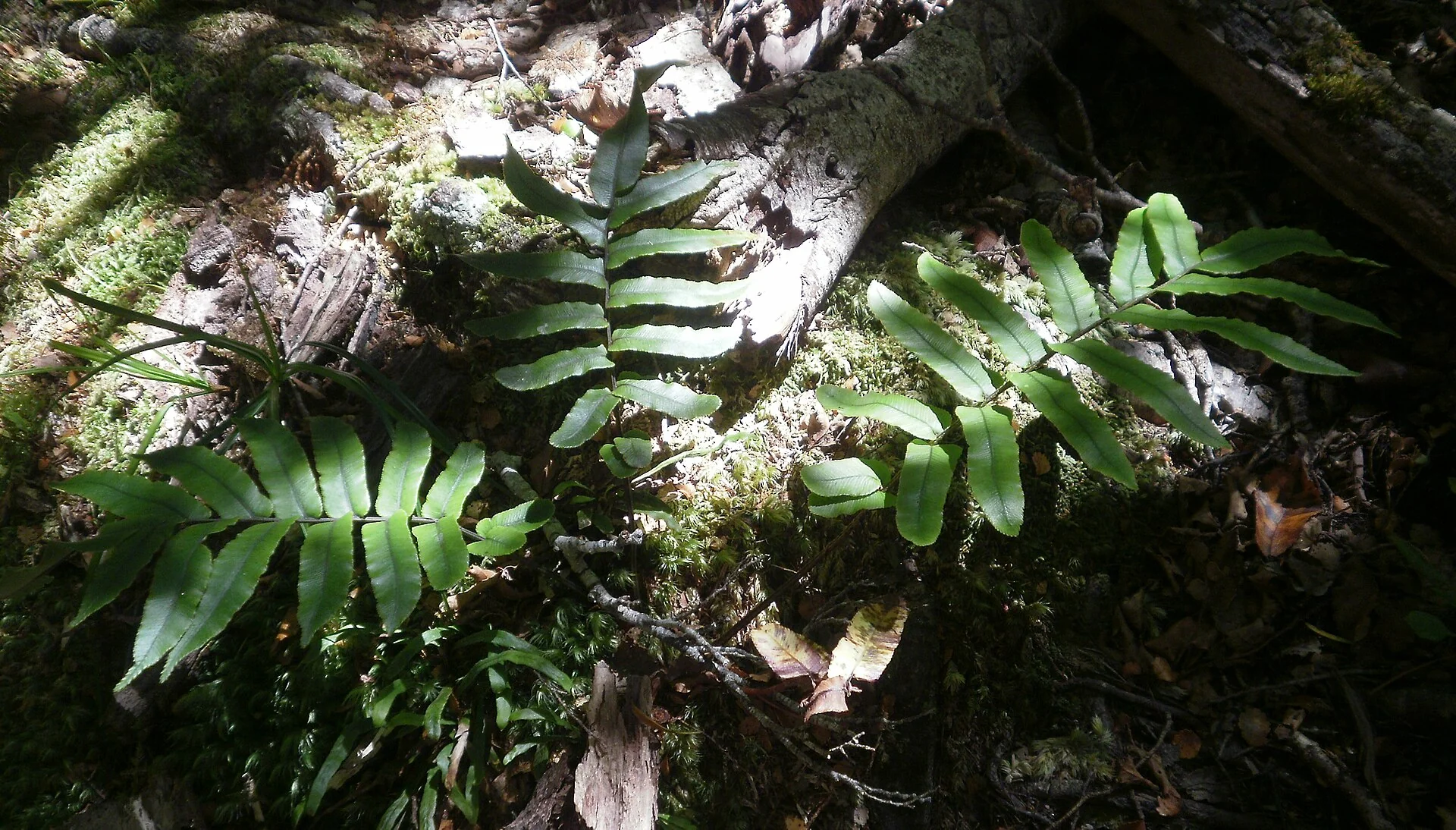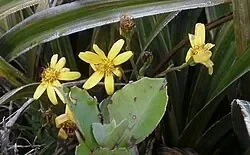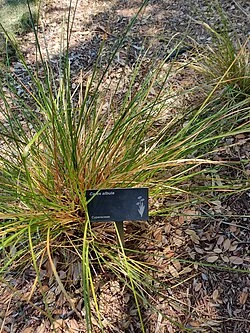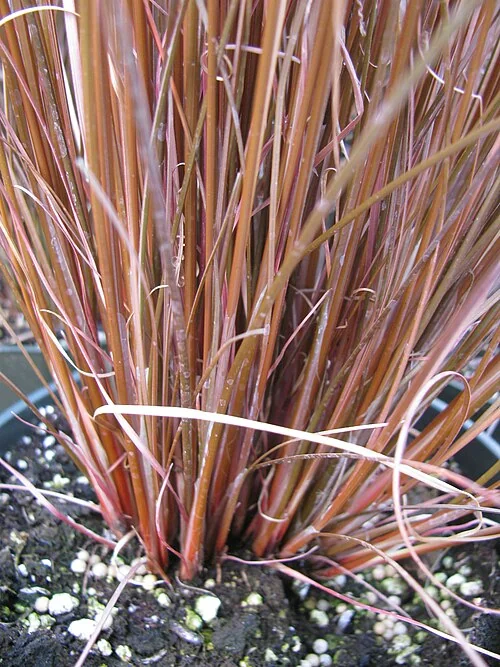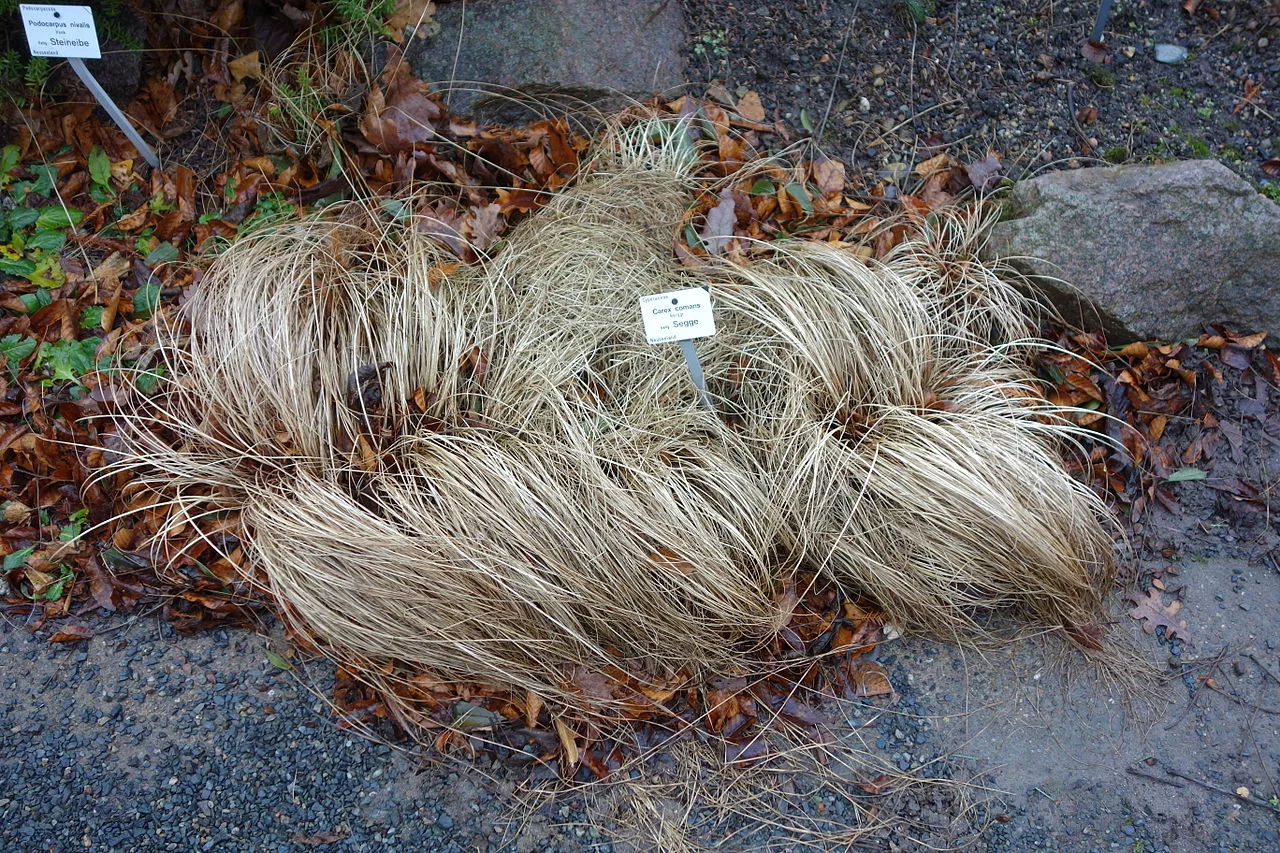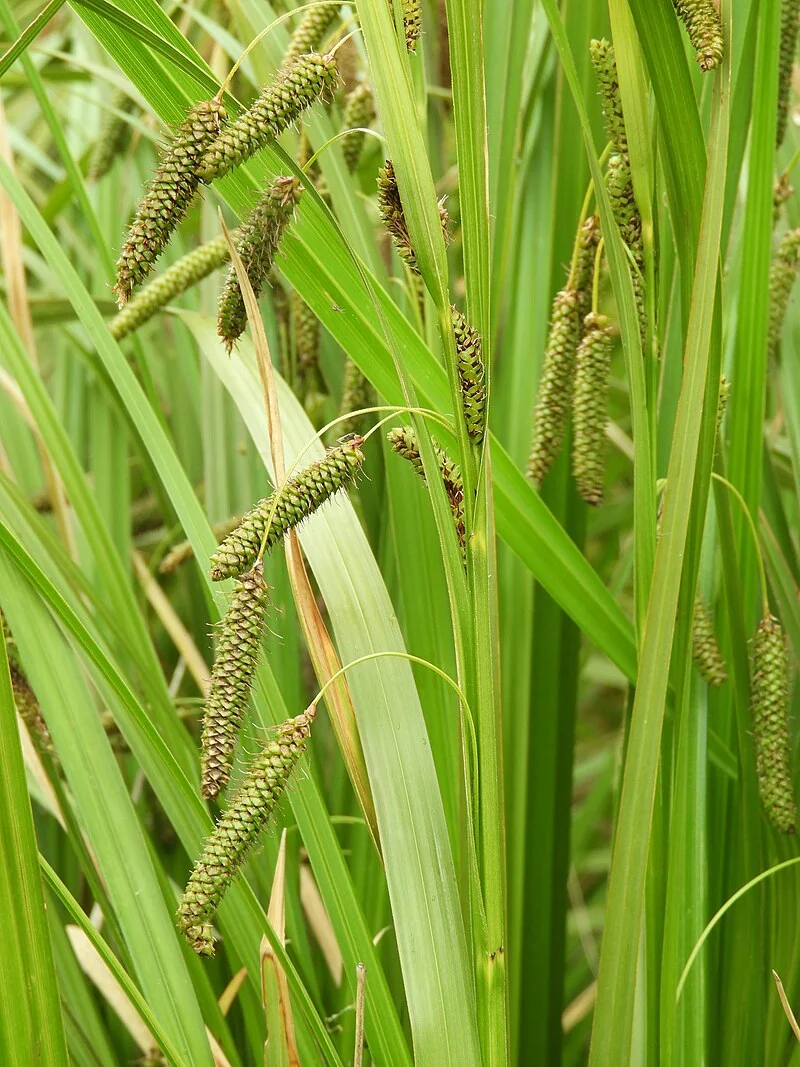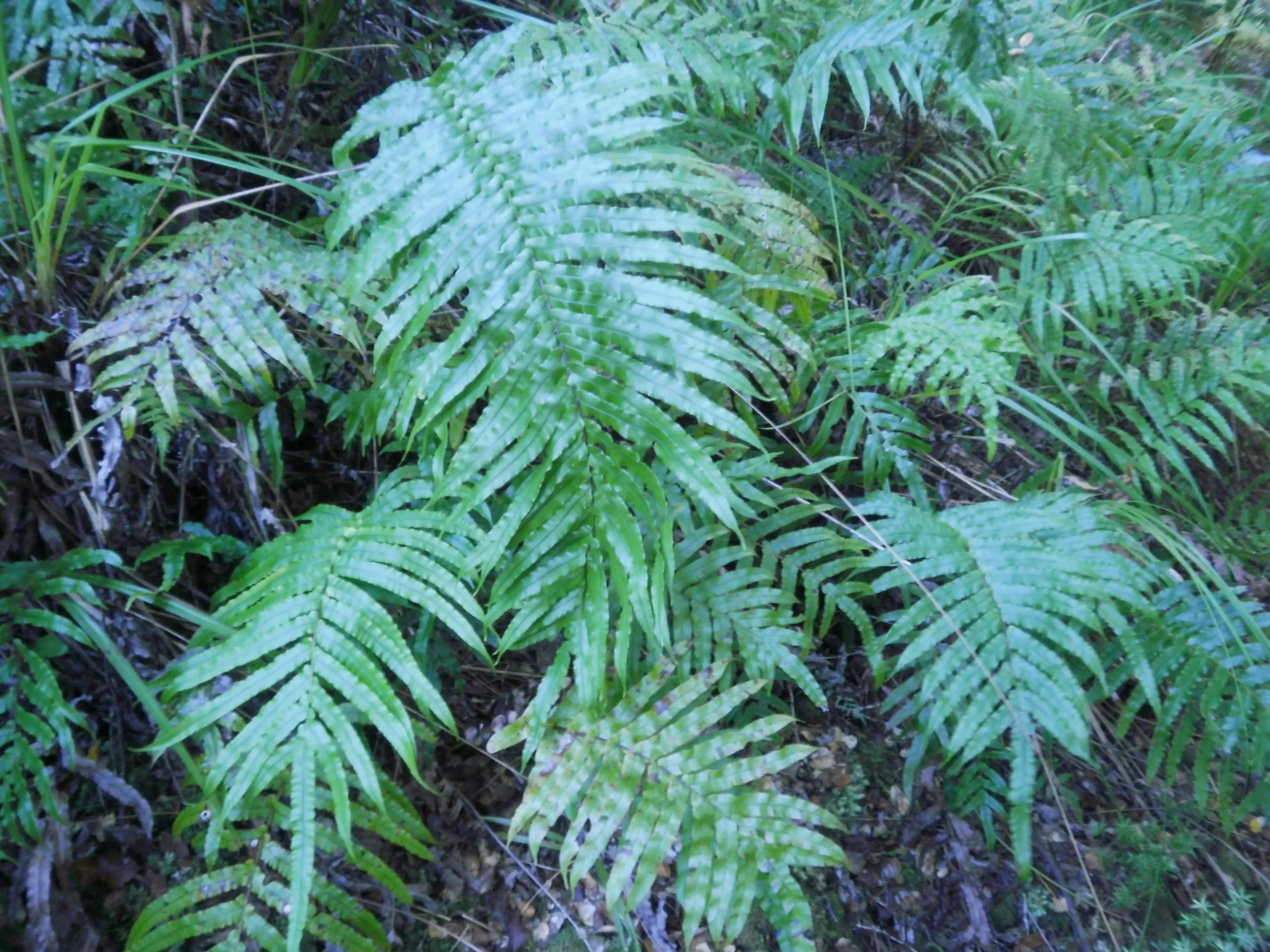
Kiokio
Blechnum novae-zelandiae
Introduction
Essential Information
Blechnum novae-zelandiae , commonly known as Kiokio or Palm-leaf Fern, is one of New Zealand's most common and distinctive native ferns. With its upright growth habit and striking fronds that emerge in vibrant red-pink colors before maturing to deep green, this adaptable fern creates a dramatic presence in a variety of habitats from coastal areas to mountain slopes. Its versatility and visual appeal make it both an ecological cornerstone and a popular landscaping choice. The ecological significance of Kiokio in New Zealand's diverse ecosystems cannot be overstated. native trees

Plant Description
Botanical Features
Kiokio ( Blechnum novae ) is a distinctive native plant with unique botanical characteristics that make it well-suited to New Zealand's diverse environments. This species exhibits typical features of its genus and family, with specialized adaptations that allow it to thrive in its natural habitat. The plant 's morphological features, including its leaf structure, growth habit, and reproductive characteristics, reflect millions of years of evolution in New Zealand's isolated environment. Understanding the botanical description of Kiokio helps gardeners appreciate its unique characteristics and provides insight into its cultivation requirements and ecological role.
Quick Facts
Plant Specifications
| Scientific Name | Blechnum novae-zelandiae |
|---|---|
| Height | 0.5-1.2 m (fronds) |
| Spread | Clumps up to 1.5 m across |
| Water Needs | Moderate to high; prefers moist soil, tolerates short dry spells once established |
| Light | Partial to full shade (tolerates some morning sun) |
| Frost Tolerance | High (frost hardy to at least -5°C; fronds may die back but regrow) |
| Salt Tolerance | Low to moderate (not suited to exposed coastal sites) |
| Growth Rate | Moderate to fast |
| Lifespan | Perennial (long-lived, clumps persist for many years) |
Climate Best Suited to
Kiokio is remarkably adaptable and grows throughout New Zealand from coastal areas to subalpine zones. It thrives in moist, shaded environments but can tolerate a wide range of conditions including exposed sites once established. Its versatility makes it suitable for most regions of New Zealand.
Regional Suitability
| City | Climate Suitability |
|---|---|
| Whangārei | Ideal |
| Auckland | Ideal |
| Hamilton | Ideal |
| Tauranga | Ideal |
| Rotorua | Ideal |
| Gisborne | Ideal |
| New Plymouth | Ideal |
| Napier | Ideal |
| Whanganui | Ideal |
| Palmerston North | Ideal |
| Wellington | Ideal |
| Nelson | Ideal |
| Christchurch | Ideal |
| Dunedin | Ideal |
| Invercargill | Ideal |
Natural Habitat
Typical Environments
Blechnum is naturally found in specific habitats throughout New Zealand. Understanding its natural environment helps in providing appropriate growing conditions in cultivation.
Plant Conservation
Threats and Efforts
Kiokio (Blechnum novae-zelandiae, now Parablechnum novae-zelandiae) is a native New Zealand fern with a national conservation status of "Not Threatened." This classification reflects its widespread distribution and adaptability across diverse forest habitats throughout New Zealand, where it forms an important component of understory communities.
Despite its secure national status, kiokio faces ongoing conservation challenges that require continued habitat protection and management. The primary threats include habitat loss and fragmentation through deforestation, land conversion for agriculture and urban development, which reduces the continuous forest areas where this species naturally thrives. Changes to forest composition, particularly alterations to light levels and moisture conditions caused by canopy removal or edge effects, can impact local populations. Competition from invasive plant species, soil disturbance from forestry operations, and browsing pressure from introduced mammals also pose challenges to natural regeneration and colony health. Its preference for damp, shaded forest environments makes it vulnerable to changes in hydrology and forest microclimate. The species' role as a traditional food source makes its conservation culturally significant for maintaining connections to traditional Mori practices and ecological knowledge. Conservation efforts focus on protecting intact forest ecosystems, controlling invasive species, maintaining appropriate forest management practices that preserve understory diversity, and supporting restoration projects that include native fern communities. Its ecological importance as habitat for native fauna and its cultural significance as a traditional food source make its conservation valuable for both biodiversity and cultural heritage preservation. By supporting native forest protection, sustainable land management practices, and education about traditional plant uses, we can help ensure the continued survival of this culturally and ecologically important native fern.
Soil Requirements
Kiokio performs best in the following soil conditions:
- Moist, humus-rich soil
- Good drainage while retaining moisture
- Slightly acidic to neutral pH (5.5-7.0)
- Tolerates a range of soil types including clay
- Benefits from added organic matter
Light Requirements
This fern is adaptable to various light conditions:
- Prefers partial to full shade
- Can tolerate morning sun or dappled light
- Avoid hot afternoon sun, especially in warmer regions
- More sun tolerance in cooler, humid climates
- Young fronds may burn in direct sunlight
Water Requirements
Kiokio has moderate to high water needs:
- Keep soil consistently moist, especially when establishing
- More drought -tolerant than many other ferns once established
- Benefits from regular watering during dry periods
- Mulching helps retain soil moisture
- Avoid waterlogged conditions
Temperature Tolerance
Kiokio is hardy across a wide temperature range:
- Frost hardy to at least -5°C (23°F)
- Fronds may die back in severe frost but will regrow
- Prefers cool to moderate temperatures
- May need extra water during hot periods
- Can grow from coastal to subalpine environments
Understanding the growing requirements of Kiokio is crucial not only for successful cultivation but also for appreciating its ecological significance. These requirements reflect its natural habitat preferences and demonstrate why it plays such a vital role in New Zealand's ecosystems. The ecological significance of Kiokio is particularly evident in its ability to thrive across diverse environmental conditions.
Planting Guide
When to Plant
The best time to plant Kiokio is during the following seasons:
Spring and autumn are ideal planting times, allowing the fern to establish before summer heat or winter cold.
Where to Plant
Kiokio is versatile and can be planted in various locations:
- Shaded garden borders
- Woodland gardens and ferneries
- Stream and pond margins
- Under tree canopies
- Shaded slopes for erosion control
- Native plant gardens
- Large containers in shaded areas
How to Plant
- Prepare the planting area by removing weeds and incorporating organic matter
- Dig a hole twice as wide as the root ball and at the same depth
- Position the fern at the same level it was growing previously
- Backfill with soil, firming gently around the roots
- Water thoroughly after planting
- Apply a 5-7cm layer of mulch, keeping it away from the crown
- Space plants 60-100cm apart to allow for growth
Companion Plants
Kiokio pairs well with these native New Zealand plants :
- Astelia species (Bush Flax)
- Coprosma species (especially low-growing forms)
- Libertia species (New Zealand Iris)
- Carex species (Sedges)
- Phormium cookianum (Mountain Flax)
- Other native ferns like Asplenium bulbiferum ( Hen and Chicken Fern)
- Fuchsia excorticata (Tree Fuchsia) for dappled shade
Ecological Significance
Austroderia toetoe, commonly known as Toetoe, holds significant ecological importance in New Zealand's diverse ecosystems. This native grass plays a crucial role in habitat creation, erosion control, and supporting biodiversity.
- Habitat and Shelter Provider: Toetoe forms dense tussocks that offer structure and shelter for a variety of native wildlife, including birds, insects, and other invertebrates. It provides cover and nesting sites, particularly for ground-nesting bird species.
- Erosion Control and Stabilization: With its extensive root systems, Toetoe effectively binds soil, intercepts runoff, and helps stabilize banks along waterways, coastal dunes, and other disturbed areas, thereby preventing erosion.
- Wetland Keystone Species: It is considered a fundamental species in New Zealand's wetland ecosystems, often acting as a pioneer species that colonizes disturbed wetland sites.
- Food Source: The plant's plumes produce abundant seeds that are dispersed by wind and serve as a food source for a wide range of endemic and exotic bird species, especially during summer. It also supports insects and other small invertebrates.
- Adaptability and Resilience: Toetoe is highly adaptable, thriving in various conditions from coastal dunes to subalpine environments. It demonstrates remarkable tolerance to drought, frost, and coastal exposure, and can grow in diverse soil types, including poor soils and coastal sand. Its resilience allows it to regenerate quickly after disturbances such as fire.
- Windbreaks: In agricultural settings, established clumps of Toetoe can serve as effective windbreaks, offering protection for livestock and crops.
It is important to differentiate native Austroderia toetoe from invasive South American pampas grass (Cortaderia species), which can outcompete native flora.
Uses & Significance
Garden Uses
Traditional Mori Uses (Rongo)
Kiokio holds cultural significance within Mori traditions. The fronds were historically used to wrap vegetable foods, imparting flavor during hngi (earth oven) cooking. Young fronds, known as koru or fiddleheads, were cooked and eaten as a vegetable, providing a valuable food source for Mori travelers in the bush. While specific medicinal applications are not extensively detailed, some sources suggest general use of Blechnum species in traditional medicine for various ailments, and the pinkish new growth of kiokio is noted to contain comāpounds potentially useful in sunburn cream.
Landscaping Uses
Practical Applications
Blechnum is highly valued in landscaping for its aesthetic appeal and practical benefits. It can be used in various garden styles and landscape applications.
Spring
Divide clumps and refresh mulch.
Summer
Water during dry spells; provide shade if needed.
Autumn
Remove old fronds and tidy up plants.
Winter
Minimal care needed; protect from severe frost.
Pruning and Maintenance
Techniques and Timing
Blechnum generally requires minimal pruning. Remove dead or damaged growth as needed and shape the plant to maintain desired form. Pruning is best done in late winter or early spring before new growth begins.
How to Grow Kiokio
From Division
Division represents the most reliable and straightforward propagation method for Kiokio, taking advantage of the plant's natural clumping growth habit through creeping rhizomes that form expanding colonies over time. This method is particularly valuable for gardeners wanting immediate results and for establishing multiple plants with identical characteristics to the parent. The optimal timing for division is during spring when new growth is beginning to emerge, or in early autumn when temperatures are cooling and rainfall increasing, providing ideal conditions for rapid establishment. Begin by carefully excavating around the entire clump to expose the underground rhizome system, using a garden fork to work around the perimeter and minimize root damage. Kiokio develops a substantial network of thick, creeping rhizomes that can extend several meters from the original plant, creating natural division points where new crowns have formed. Once the clump is lifted, examine the rhizome structure to identify sections with well-developed root systems and multiple growing points or emerging fronds. Use a sharp, clean knife or spade to cut through the rhizomes, ensuring each division includes both healthy roots and at least 2-3 growing points for successful establishment. Divisions can be quite generous in size as larger sections establish more quickly and provide immediate visual impact in the garden. Handle divisions carefully to preserve the fibrous root system that is essential for rapid water and nutrient uptake. Replant divisions immediately at the same depth they were previously growing, in prepared sites with moist, well-draining soil enriched with organic matter. Space divisions 60-90cm apart to accommodate their spreading habit and eventual mature size of up to 1.5 meters wide. Water thoroughly after planting and maintain consistent moisture throughout the first growing season, applying organic mulch to retain soil moisture and suppress competition from weeds. This method typically results in established plants within one growing season and is the preferred approach for commercial nursery production and landscape plantings.
From Spores
Spore propagation is the natural reproductive method for Kiokio, offering the opportunity to raise large numbers of plants while maintaining genetic diversity essential for this widespread New Zealand native fern. This method requires patience and careful attention to sterile conditions, but provides the most authentic approach to growing this species. Kiokio produces abundant spores on the undersides of fertile fronds, typically visible as dark brown patches (sori) arranged in neat rows along the pinnae margins during late summer and autumn. For successful spore collection, select mature fronds where the sori have darkened but not yet opened to release their spores. Cut fronds in the morning when moisture levels are optimal and place them face-down on clean white paper in a dry, well-ventilated location for 24-48 hours to allow natural spore release. The fine, dust-like spores will appear as a brown powder on the paper, indicating successful collection. Prepare a sterile growing medium using equal parts quality seed-raising mix, sphagnum moss, and perlite, sterilized by pouring boiling water over the mixture and allowing it to cool completely. Sow spores thinly across the surface of moistened medium in sterile containers, covering with glass or clear plastic to maintain high humidity while allowing some air circulation. Maintain consistent temperatures of 18-21°C in bright, indirect light, avoiding direct sunlight which can overheat the developing gametophytes. The first green, heart-shaped gametophytes typically appear within 4-8 weeks, followed by the development of tiny sporophyte plants over the following 3-6 months. Young sporophytes require consistent moisture and should be transplanted to individual containers when they reach 2-3cm in height. This method is particularly valuable for restoration projects and for gardeners wanting to understand the complete life cycle of this important native fern species.
From Tissue Culture
Tissue culture propagation represents the most advanced method for multiplying Kiokio, primarily used in commercial nursery production and conservation programs where large numbers of genetically identical plants are required. This sophisticated technique involves growing plants from small tissue samples in sterile laboratory conditions, offering advantages of rapid multiplication, disease-free stock, and year-round production capability. The process begins with the selection of healthy parent plants and the collection of young, actively growing fronds or rhizome tips as explant material. Surface sterilization of plant material is critical, typically involving sequential treatments with ethanol and sodium hypochlorite solutions to eliminate contaminating microorganisms while preserving tissue viability. Explants are then placed on specialized nutrient media containing precise combinations of vitamins, minerals, plant hormones, and growth regulators that promote cell division and differentiation. Initial callus formation occurs within 2-4 weeks under controlled environmental conditions of 22-25°C temperature, 16-hour photoperiods using fluorescent lighting, and sterile air circulation. Subsequent subculturing onto different media formulations encourages shoot formation and root development, with plantlets typically ready for acclimatization after 8-12 weeks in culture. The acclimatization process involves gradually reducing humidity and increasing light levels to prepare tissue-cultured plants for normal growing conditions. While this method requires specialized equipment, sterile techniques, and considerable expertise, it enables the production of thousands of plants from a single parent specimen and is particularly valuable for propagating superior selections or rare forms. Commercial nurseries increasingly use tissue culture to produce consistent, high-quality Kiokio plants for the landscaping and restoration markets, ensuring genetic uniformity and rapid availability of this popular native fern species.
Pests & Diseases
Common Pests
- Slugs and Snails: Can damage new fronds. Control with organic baits, copper tape, or beer traps.
- Scale Insects: May appear on fronds as small bumps. Remove with cotton swab dipped in alcohol or use horticultural oil.
- Caterpillars: Occasionally feed on fronds. Hand-pick or use organic Bacillus thuringiensis spray if infestation is severe.
- Mealybugs: Sometimes infest the crown and base of fronds. Treat with insecticidal soap or neem oil.
Common Diseases
- Root Rot: Caused by overwatering or poor drainage. Ensure well -draining soil and avoid waterlogged conditions.
- Fungal Leaf Spots: Various fungi can cause spotting on fronds. Improve air circulation and avoid overhead watering.
- Rust: Appears as orange or brown spots on fronds. Remove affected fronds and improve air circulation.
- Crown Rot: Often results from water sitting in the crown. Avoid overhead watering and ensure good drainage.
Environmental Issues
- Sunburn: Direct sunlight causes yellowing and browning of fronds. Move to a more shaded location.
- Frost Damage: Severe frosts can damage fronds. Fronds may die back but will regrow from the crown in spring.
- Wind Damage: Strong winds can tatter fronds. Plant in sheltered locations or provide windbreaks.
- Drought Stress: Extended dry periods cause frond edges to brown. Increase watering and apply mulch.
Kiokio is generally resilient to pests and diseases when grown in appropriate conditions. Good cultural practices including proper spacing, appropriate watering, and good air circulation will prevent most problems. This fern is more tolerant of environmental stresses than many other fern species, making it relatively low-maintenance.
Cultural Significance
Kiokio (Blechnum novae-zelandiae) was a significant plant for Mori. The young, unfurled fronds (koru) were eaten as a vegetable, and the starchy rhizome was also consumed. The fronds were used for weaving and thatching.
Bonus Tip
The young, unfurled fronds of Kiokio, known as koru, were traditionally eaten by Mori. These tender shoots were steamed and provided a valuable food source for travelers in the bush. This highlights the practical utility of native plants and the deep knowledge Mori held of their environment.
